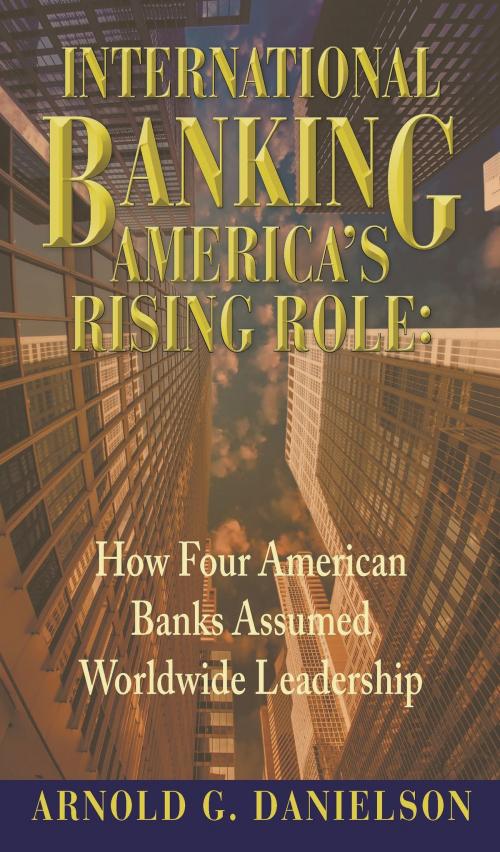International Banking
Business & Finance, Finance & Investing, Banks & Banking, Business Reference, Corporate History| Author: | Arnold G. Danielson | ISBN: | 9780997722413 |
| Publisher: | SDP Publishing | Publication: | August 22, 2016 |
| Imprint: | Smashwords Edition | Language: | English |
| Author: | Arnold G. Danielson |
| ISBN: | 9780997722413 |
| Publisher: | SDP Publishing |
| Publication: | August 22, 2016 |
| Imprint: | Smashwords Edition |
| Language: | English |
The story of international banking over the last twenty years began as an assembling of financial power in Europe, with London as the focal point, that would be totally reversed by the financial crisis of 2008. This was a crisis with its origins in the United States that caused such well-known institutions as Citigroup, Merrill Lynch, Wachovia, Lehman Brothers, Bear Stearns, AIG, Fannie Mae and Freddie Mac to be quasi-nationalized, forced to sell, or in the case of Lehman Brothers, fall into bankruptcy. Yet seven years later, America’s four largest banks—JPMorgan, Bank of America, Wells Fargo and a recovered Citigroup—had left every other non-state bank in the world far behind except for HSBC, and had made New York, not London, the indisputable financial capital of the world.
This book has numerous tables that record the transformation of banking power from Europe to United States, but a number that makes this transformation particularly dramatic is market capital. I have tried to avoid stock valuations in this book and concentrate on earnings, assets and equity capital, but the difference in American and European market values are hard to ignore. In May 2016, the market value of Wells Fargo was $250 billion and that of JPMorgan was $225 billion. At that time, England’s domestic banking leader, Barclay’s, had a market value of $40 billion, and Germany’s leader, Deutsche Bank, had a market value of just $23 billion. These market capitalizations were earnings justified.
An irony relative to the events of the last eight years has been watching the “too big to fail” concern work in favor of the big American banks as regulators in Washington, London and Basel made life more difficult for their competitors. In Washington, regulators chased away the largest of the big banks’ non-bank rivals, GE Capital, and deterred others from going beyond $50 billion in assets. In London, regulators with “ring fencing” appear to have made the United Kingdom’s last serious investment bank, Barclays, a second tier player. Meanwhile, continuing announcements from Basel of more capital required of large banks is forcing most of the larger European banks to shed assets.
The story of international banking over the last twenty years began as an assembling of financial power in Europe, with London as the focal point, that would be totally reversed by the financial crisis of 2008. This was a crisis with its origins in the United States that caused such well-known institutions as Citigroup, Merrill Lynch, Wachovia, Lehman Brothers, Bear Stearns, AIG, Fannie Mae and Freddie Mac to be quasi-nationalized, forced to sell, or in the case of Lehman Brothers, fall into bankruptcy. Yet seven years later, America’s four largest banks—JPMorgan, Bank of America, Wells Fargo and a recovered Citigroup—had left every other non-state bank in the world far behind except for HSBC, and had made New York, not London, the indisputable financial capital of the world.
This book has numerous tables that record the transformation of banking power from Europe to United States, but a number that makes this transformation particularly dramatic is market capital. I have tried to avoid stock valuations in this book and concentrate on earnings, assets and equity capital, but the difference in American and European market values are hard to ignore. In May 2016, the market value of Wells Fargo was $250 billion and that of JPMorgan was $225 billion. At that time, England’s domestic banking leader, Barclay’s, had a market value of $40 billion, and Germany’s leader, Deutsche Bank, had a market value of just $23 billion. These market capitalizations were earnings justified.
An irony relative to the events of the last eight years has been watching the “too big to fail” concern work in favor of the big American banks as regulators in Washington, London and Basel made life more difficult for their competitors. In Washington, regulators chased away the largest of the big banks’ non-bank rivals, GE Capital, and deterred others from going beyond $50 billion in assets. In London, regulators with “ring fencing” appear to have made the United Kingdom’s last serious investment bank, Barclays, a second tier player. Meanwhile, continuing announcements from Basel of more capital required of large banks is forcing most of the larger European banks to shed assets.















